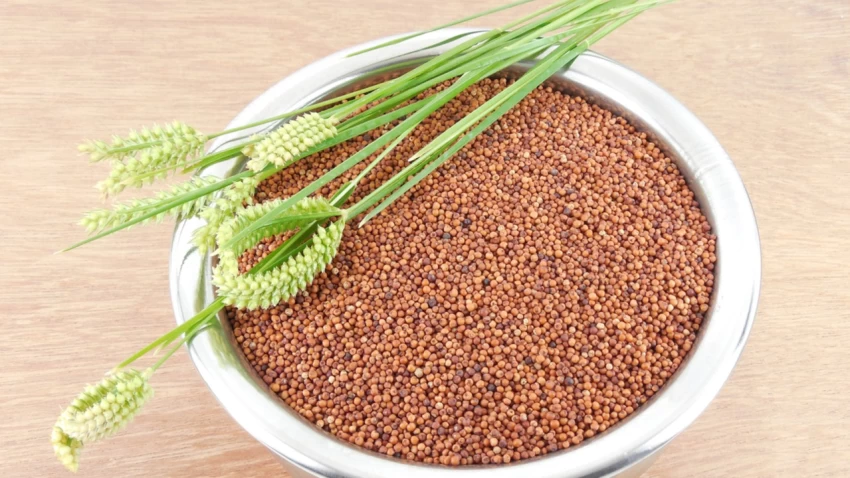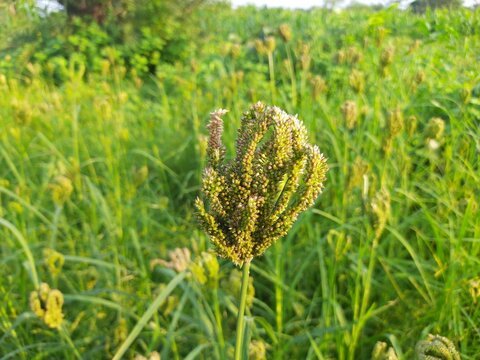An old farmer named Harish resides in the centre of a charming village in Eastern India. Where verdant fields envelop the view. Every morning, Harish meticulously attends to his fields, applying a wealth of agricultural knowledge that has been passed down to him over many generations. Among his crops is madua, or finger millet. A lesser-known grain that is highly value for his community for its resilience and health benefits. For generations, Harish’s family has been growing this ancient grain, depending on its nourishing properties to get them through difficult times. The world is starting to rediscover madua as a superfood because it is a humble looking vegetable with a wealth of nutritional benefits.
This article dives deeply into the realm of madua, examining its nutritional advantages, culinary applications, history, and the increasing popularity of this ancient grain in modern diets. We will look at academic papers and statistical data to give a thorough grasp of madua’s importance.

What is the Madua?
Madua, often called finger millet, is a grain crop that is mostly produced in arid and semi-arid climates worldwide. Eleusine coracana is its scientific name, and it’s quite well-liked in several parts of Africa and India. Madua is a crop that is essential for farmers in drought-prone areas because of its hardiness. Which allows it to flourish in poor soil conditions and require little water.
Madua’s nutritional profile
Madua is renowned for having an outstanding nutritional makeup. It is a mainstay in many communities’ diets since it is full of vital minerals like calcium, iron, protein, and dietary fibre. This is a thorough analysis of its nutrients per 100 grammes:
Amount of Nutrient in 100g Calories
| Nutrient | Amount per 100g |
|---|---|
| Calories | 336 kcal |
| Protein | 7.3 g |
| Fat | 1.5 g |
| Carbohydrates | 72.0 g |
| Fiber | 3.6 g |
| Calcium | 344 mg |
| Iron | 3.9 mg |
| Magnesium | 137 mg |
| Phosphorus | 283 mg |
Advantages of Madua for Health
High in Calcium
One of the highest calcium-containing cereals is madua, which has about 344 mg of calcium per 100 grammes. This is particularly beneficial for bone health, especially for persons who do not consume dairy products.
Free of gluten
For those with celiac disease or gluten intolerance, madua offers a nutritious alternative to wheat and other gluten-containing cereals.
A Lot of Fibre
It is a great option for diabetics since its high fibre content helps with blood sugar management and digestion.
Iron and Anemia Prevention
It has 3.9 mg of iron per 100 grammes, which helps fight anaemia, especially in developing country women and children.
Properties of Antioxidants
Antioxidants and phenolic chemicals found in abundance in madua aid in the fight against free radicals and lower the risk of chronic illnesses.
Culinary Uses of Madua
It is adaptable and useful in a variety of culinary contexts. Fermented drinks, porridge, and madua roti (flatbread) are among the traditional recipes. It is now utilis in the creation of cakes, sweets, and even as the foundation for wholesome smoothies thanks to modern culinary advancements.
Madua’s Conventional and Contemporary Uses
| Traditional Uses | Modern Uses |
|---|---|
| Madua Roti (Flatbread) | Madua Flour Pancakes |
| Porridge | Finger Millet Smoothies |
| Fermented Beverages | Madua Cookies and Cakes |
| Dumplings | Millet-based Energy Bars |
The Ascent of Madua in Modern Diets
Because of its numerous health advantages and environmentally friendly farming methods, ancient grains like. It have gained popularity in recent years. The growing consumer consciousness and desire for wholesome, environmentally friendly food options are expect to propel the ancient grain market’s significant growth on a global scale.
Statistical Knowledge
In 2021–2026, the global market for ancient grains—including. It—is project to expand at a compound annual growth rate (CAGR) of 4.8%, per a report published by Market Research Future. The increased usage of ancient grains in health and wellness goods, as well as the growing popularity of gluten-free diets, are the reasons for this growth.
Customer Profiles
The market for ancient grains is mostly being driven by millennials and health-conscious customers, according to data from a Mintel poll. About 60% of respondents who were between the ages of 25 and 34 said they regularly used ancient grains in their diets.
Environmental Impact and Sustainability
It is a sustainable crop option because of its capacity to thrive in challenging environments with little water. Given the effects of climate change and water scarcity, this quality is becoming more and more crucial. The production of madua is related with sustainable farming practices that lessen the agriculture sector’s carbon impact and promote soil conservation.
Difficulties and Opportunities for the Future
It has several advantages, but it also has drawbacks. Like low awareness, archaic farming methods, and competition from other widely consumed cereals. To improve madua production and consumption, these issues can resolve with continue research and development.
Investigation and Creation
The current focus of research is on using genetic modification and sustainable farming methods to increase the yield and disease resistance of madua. Leading these efforts are organisations such as the International Crops Research Institute for the Semi-Arid Tropics (ICRISAT).
Support for Government and Policy
Countries where, it is traditionally produce are starting to realise the possibilities of this plant. To increase madua cultivation and consumption, policy initiatives like farmer subsidies. It inclusion in public distribution systems, and awareness campaigns are essential.
Market Prospects
There are many of prospects in the health and wellness sector for goods made from madua. The options are endless, ranging from high-protein supplements to gluten-free snacks. Innovative chefs and businesspeople are looking for fresh approaches to include madua in popular diets.
Possible Madua Market Segment Market SegmentsPossible Items
| Market Segment | Potential Products |
|---|---|
| Health and Wellness | Protein Supplements, Energy Bars |
| Gluten-Free Products | Bread, Pasta, Cereal |
| Infant Nutrition | Baby Food, Fortified Porridge |
| Functional Foods | Antioxidant-rich Beverages, Nutritional Snacks |
Answers to Common Questions (FAQs)
First off, what is madua?
It sometimes referre to as finger millet, is a traditional grain value for its healthful properties and environmentally friendly farming methods.
What advantages does madua have for your health?
Calcium, iron, protein, and dietary fibre are all abundant in madua. It possesses antioxidant qualities and is devoid of gluten.
How should my diet consist of madua?
Rotis, porridge, smoothies, pancakes, cookies, and energy bars can all be made with madua.
Can those who are gluten intolerant consume madua?
Indeed, it is a great substitute for people with celiac disease or gluten intolerance because it is naturally gluten-free.
In what location is madua grown mainly?
Primarily, it is cultivated in arid and semi-arid parts of Africa and India.
How does growing madua assist the environment?
It is a sustainable crop that lowers the carbon footprint of agriculture and conserves soil because it needs little water and can thrive in unfavourable soil.
Conclusion
It is unique as a superfood with enormous promise in contemporary diets because of its remarkable nutritional profile and rich historical background. It has health benefits that are difficult to match and adaptability in both traditional and modern culinary inventions. With growing consumer awareness and the popularity of sustainable farming methods, it has the potential to have a big impact on the world food industry. Accept this ancient grain and use madua to explore a world of sustainability and health.


